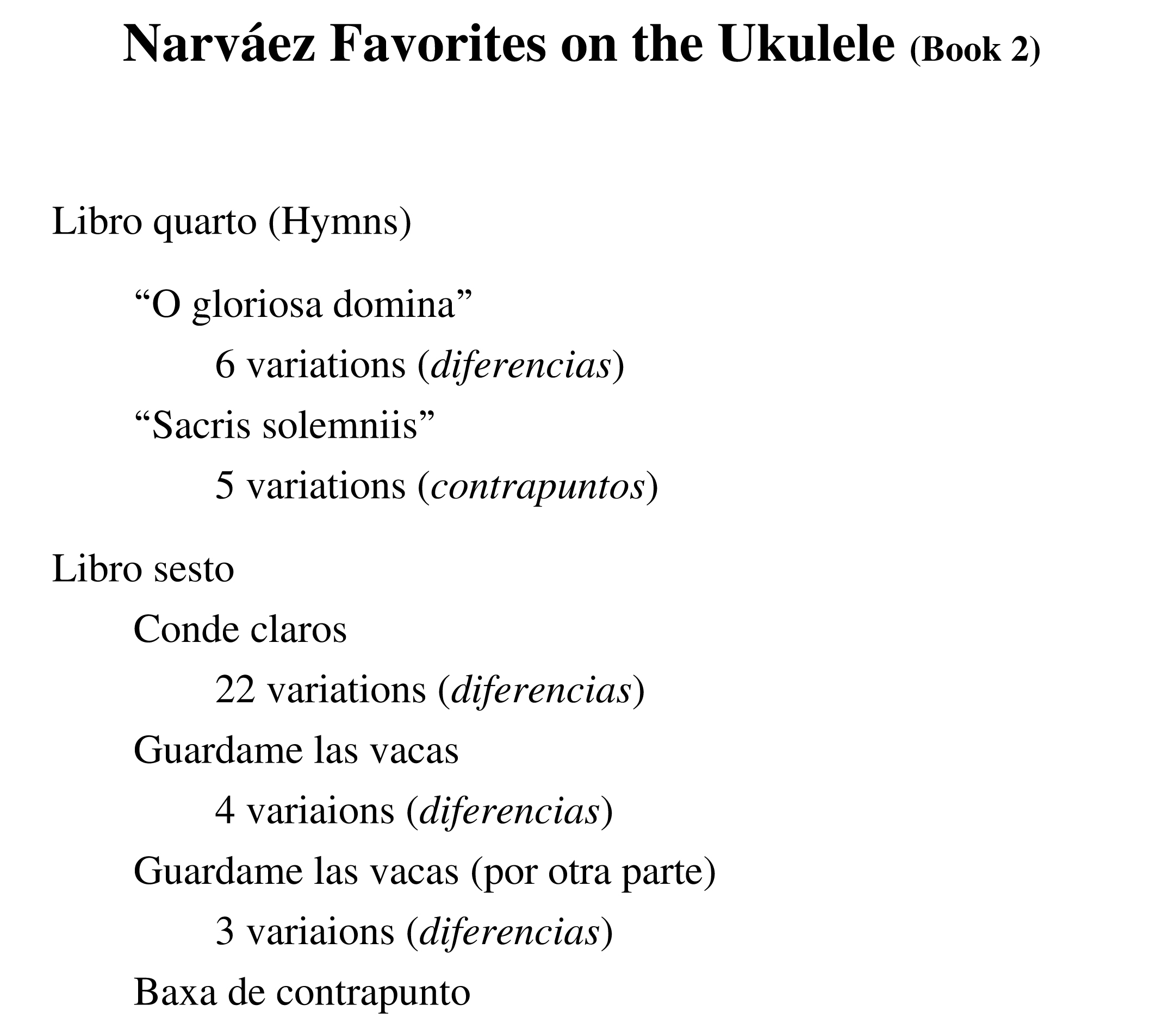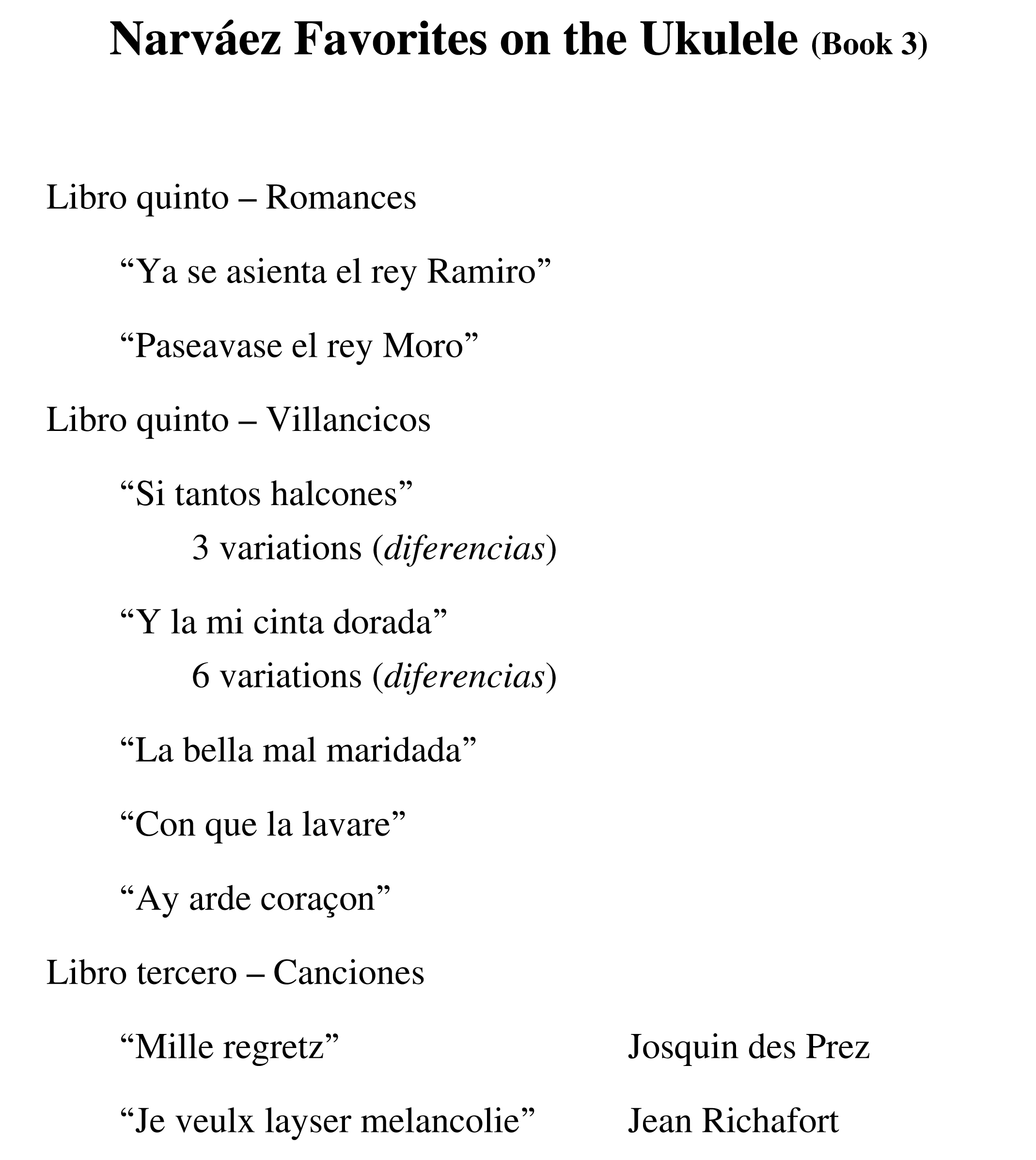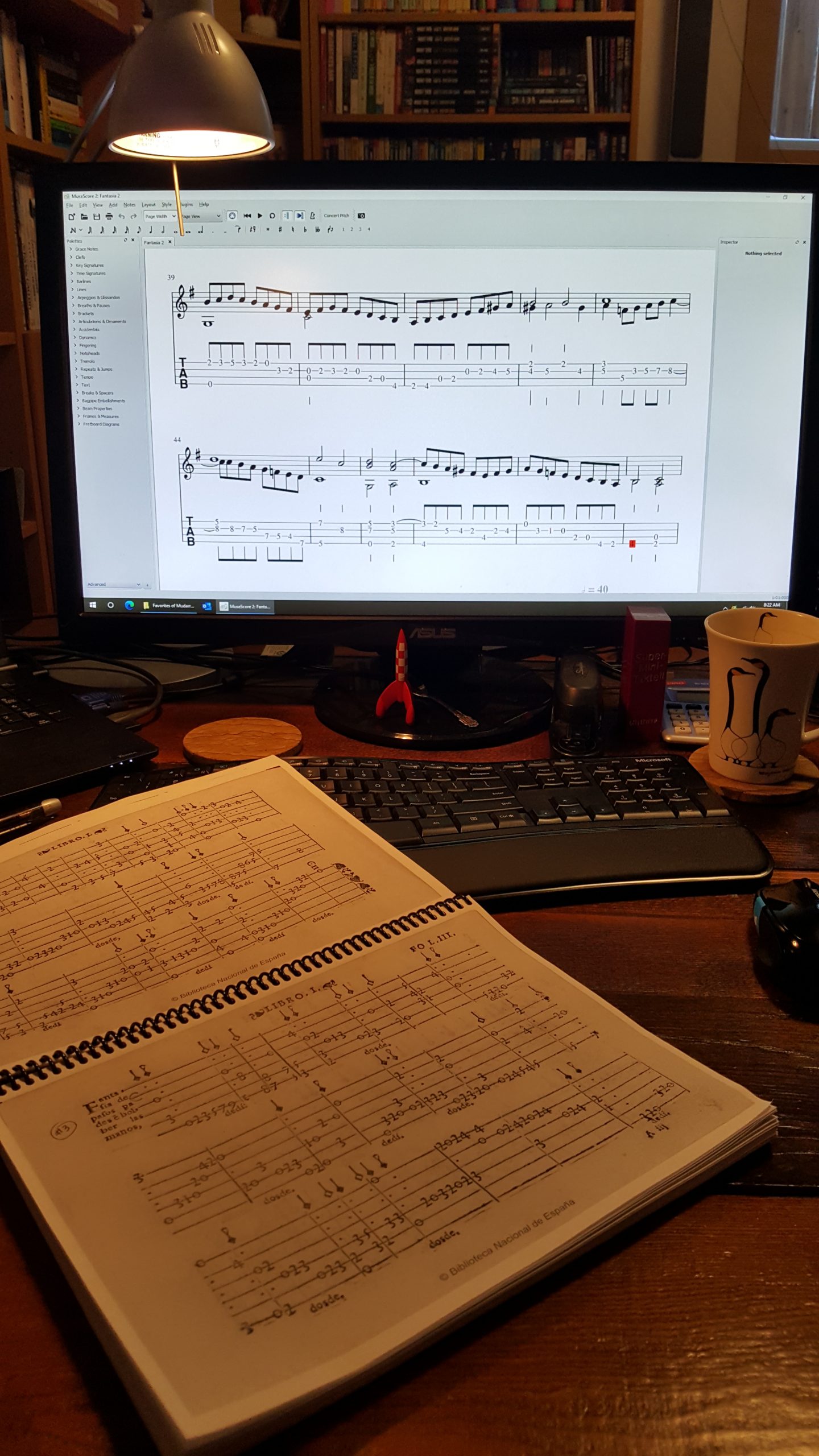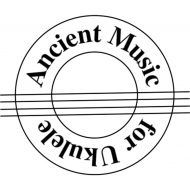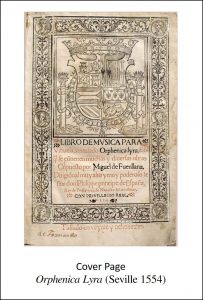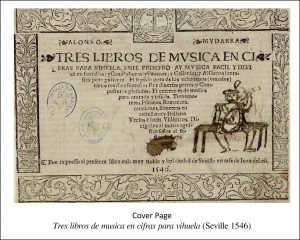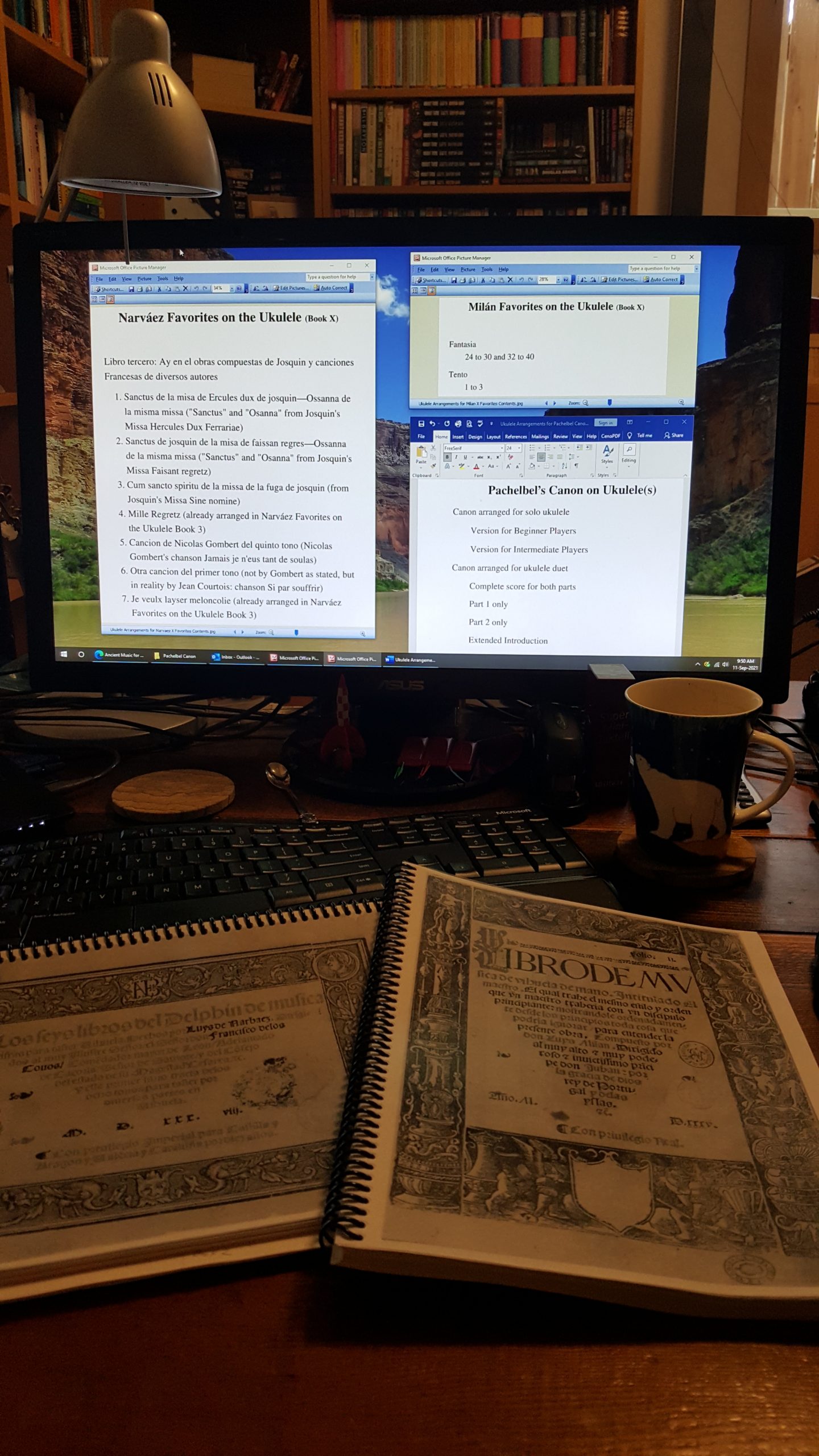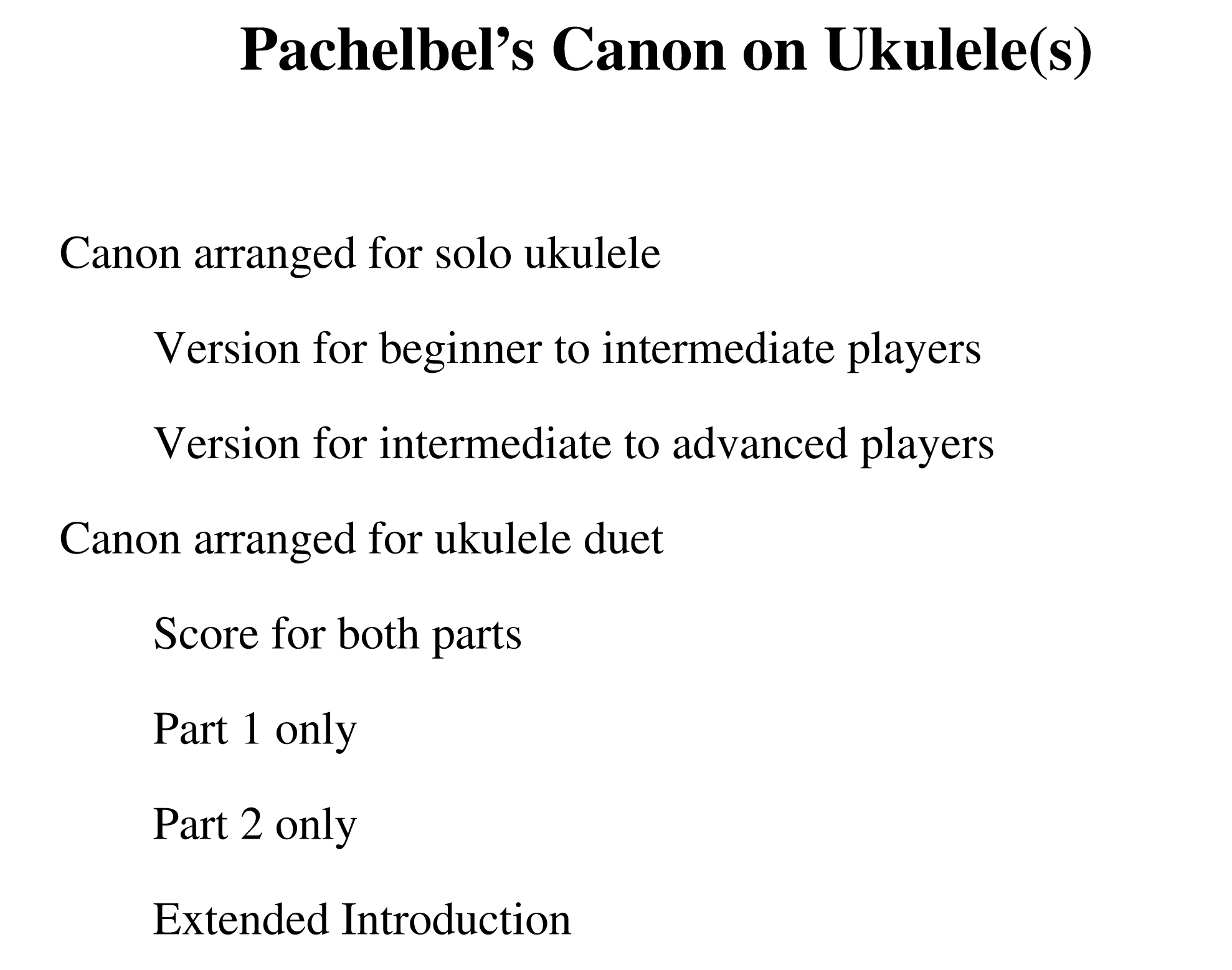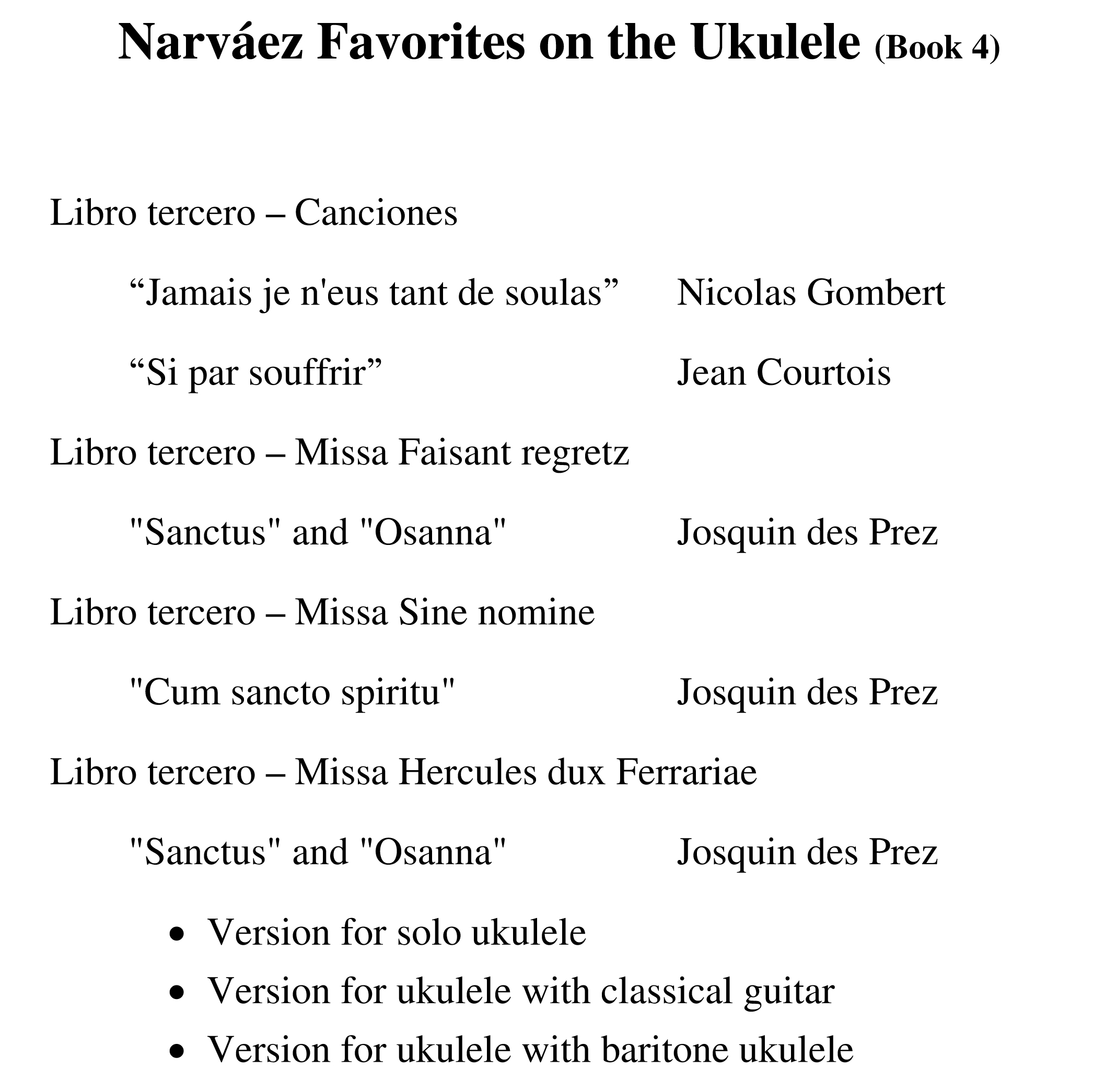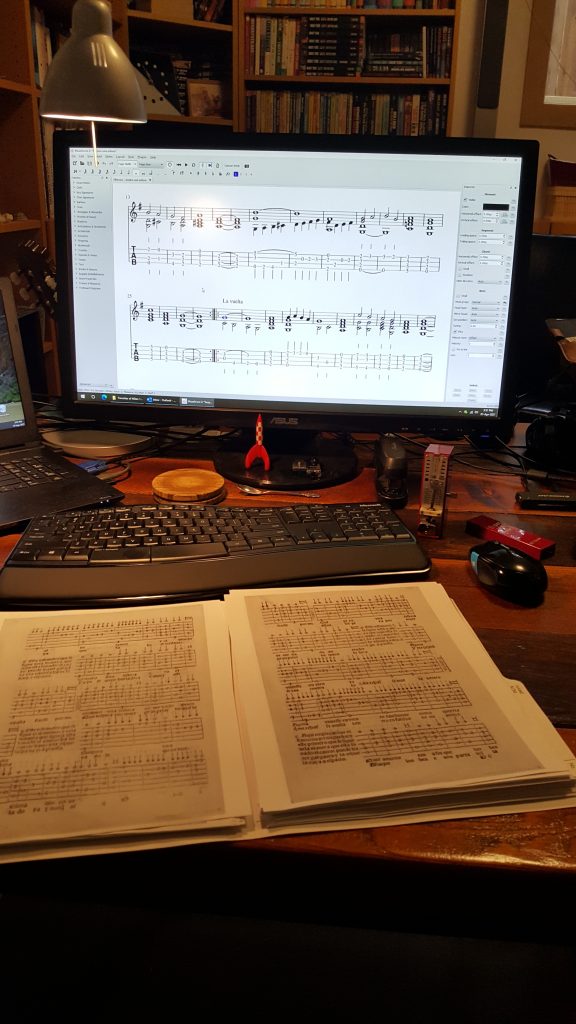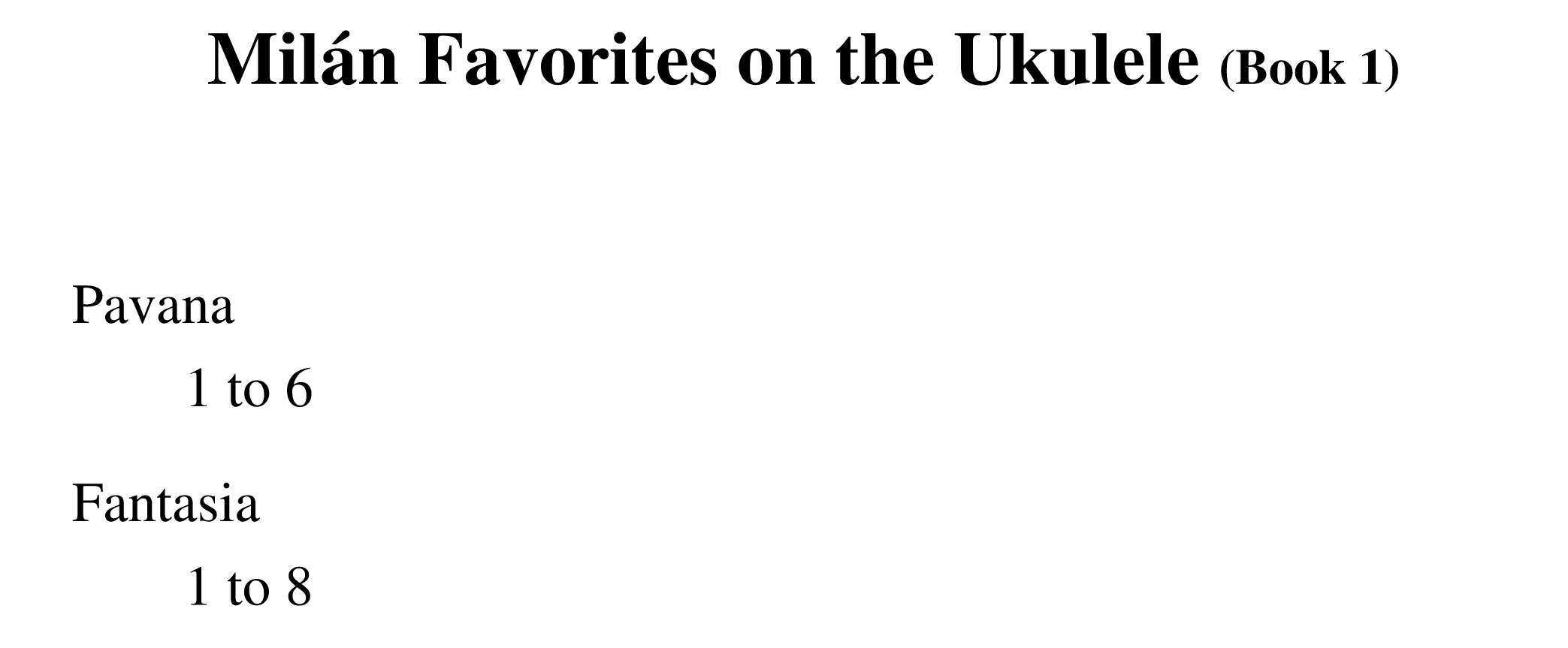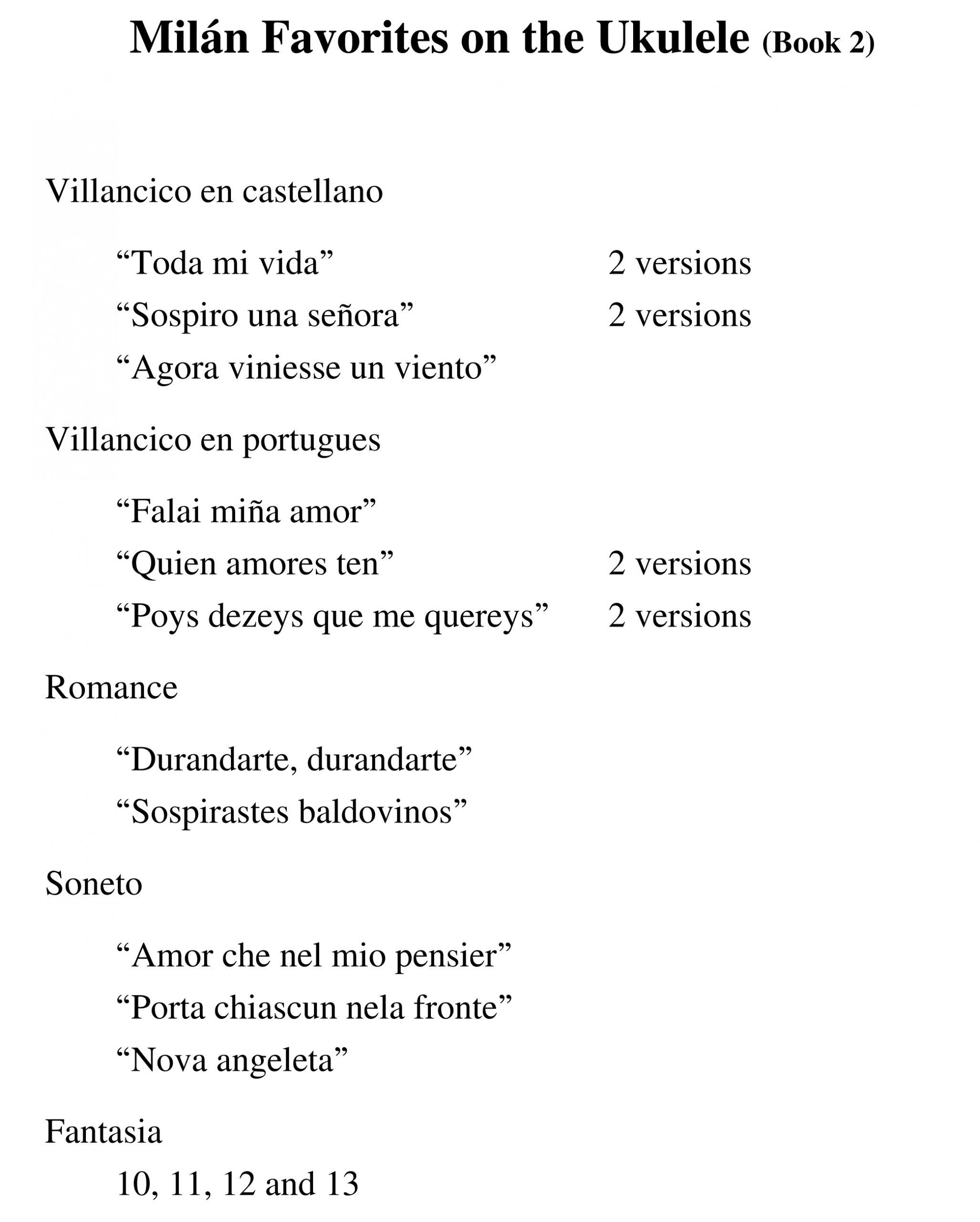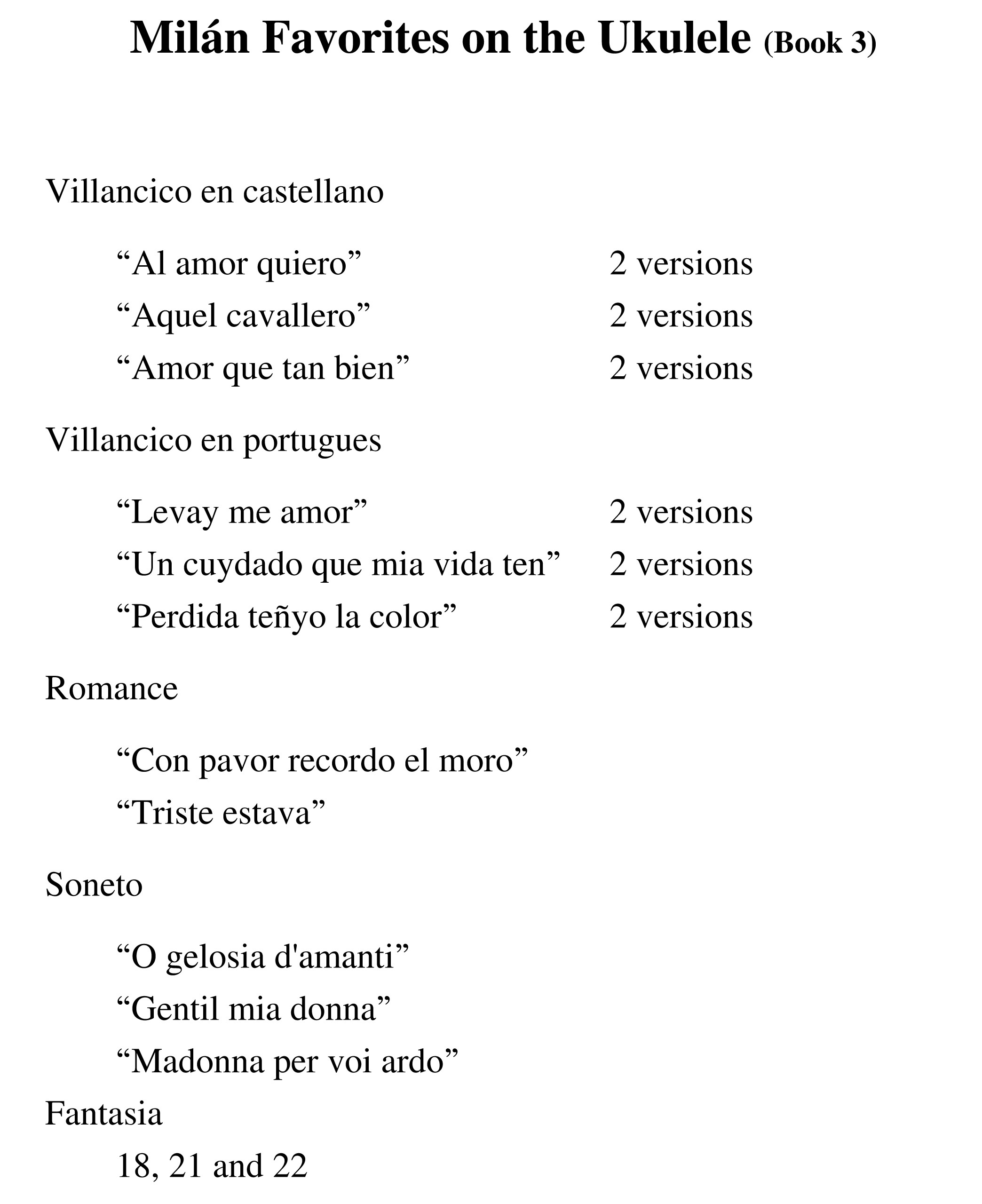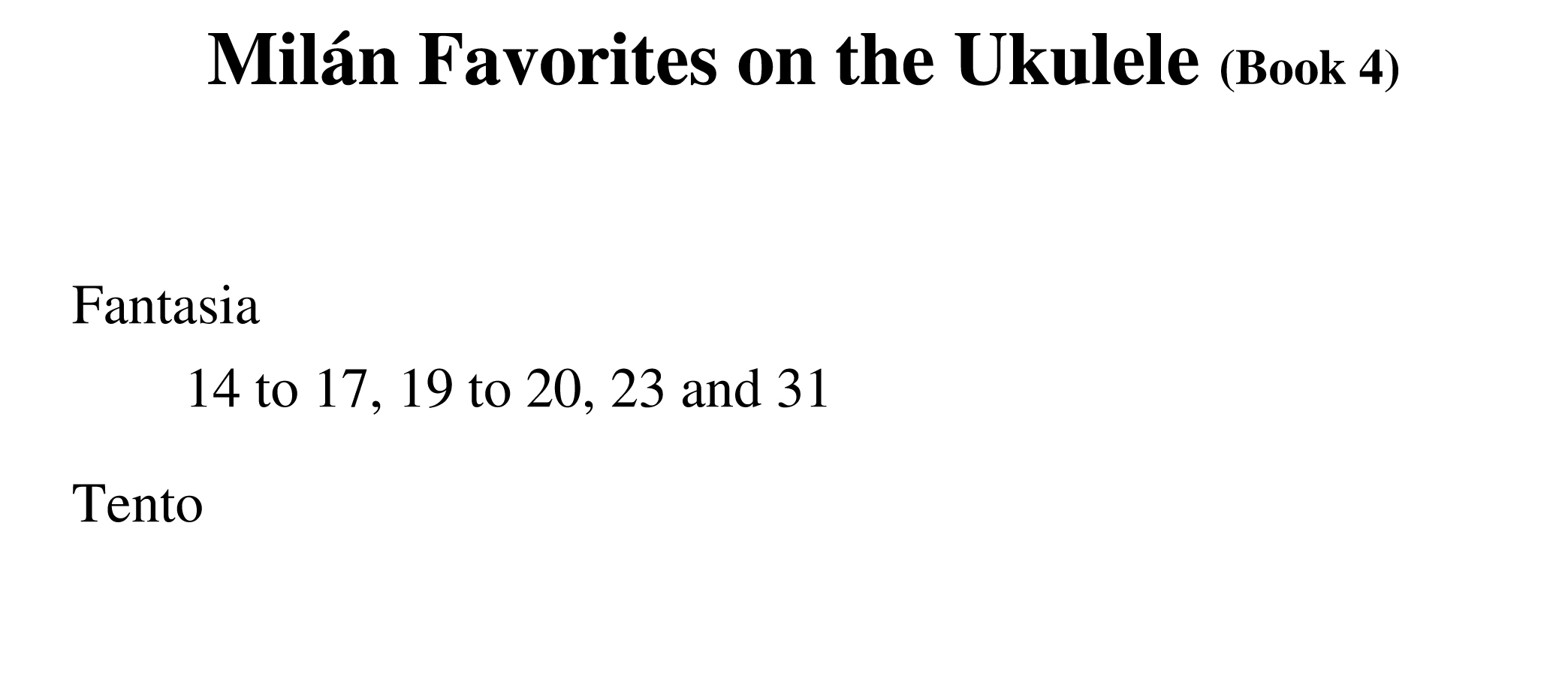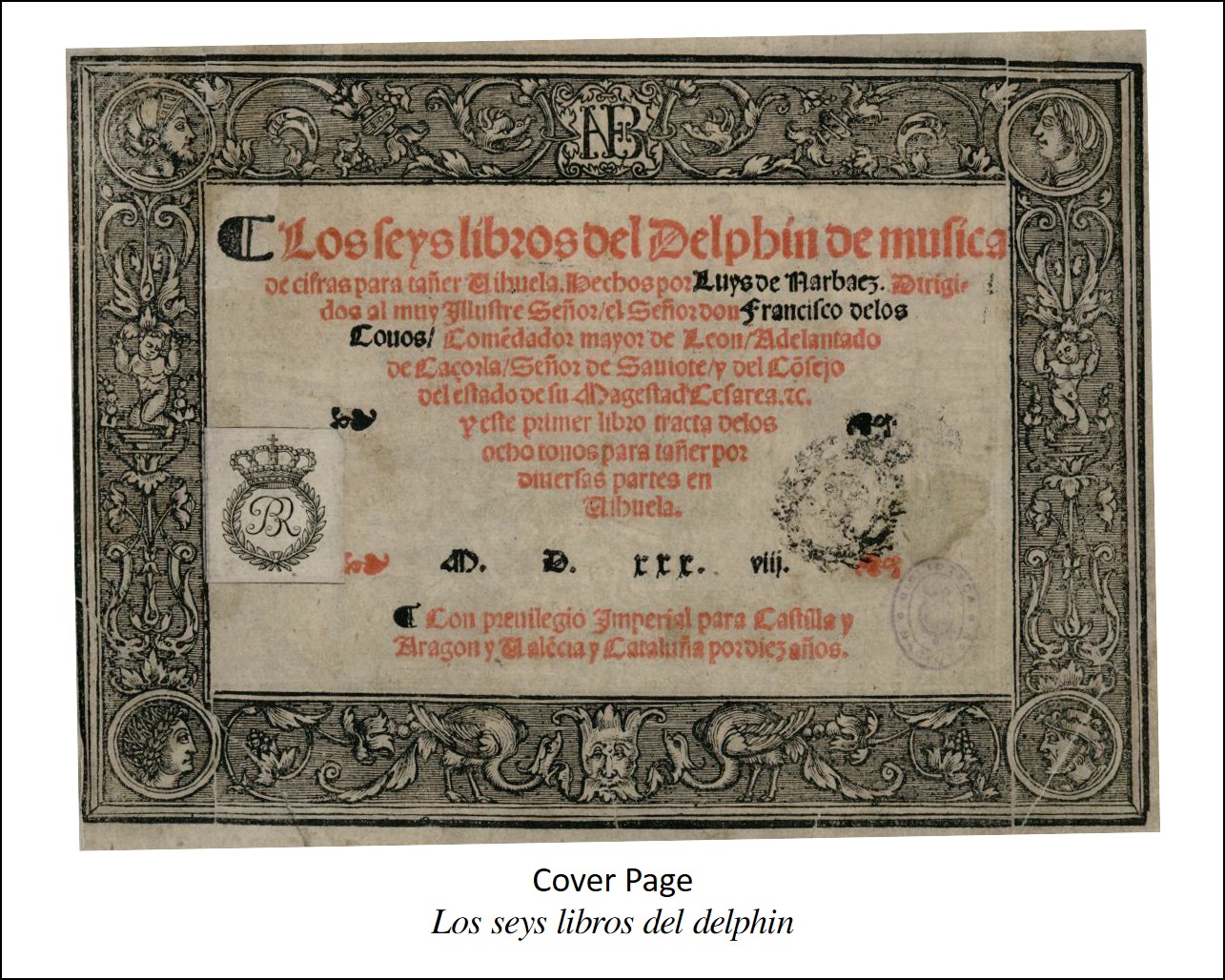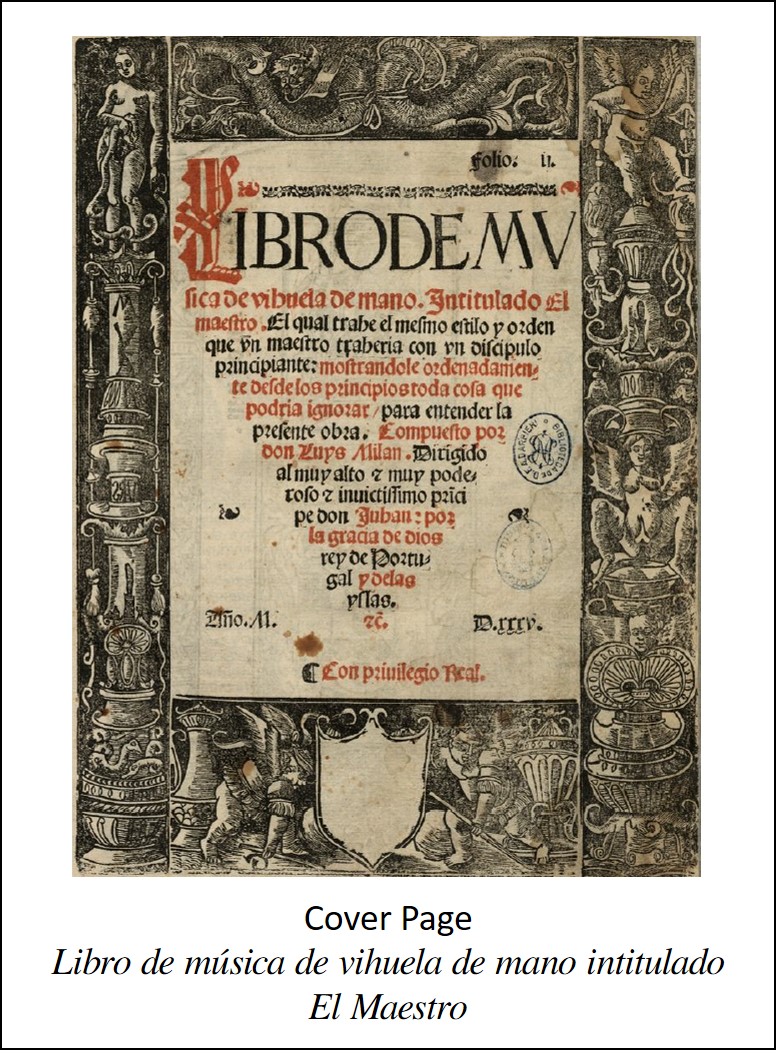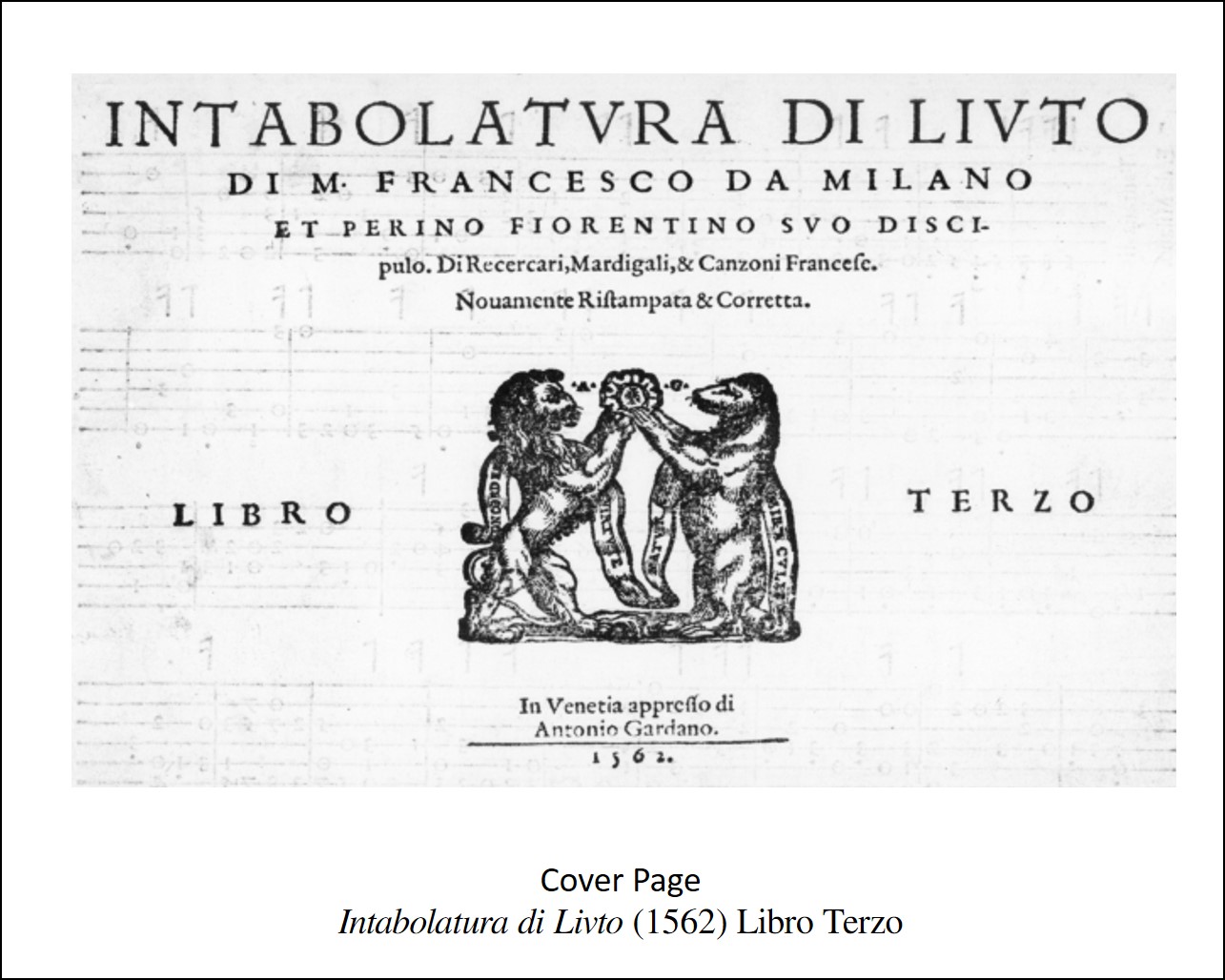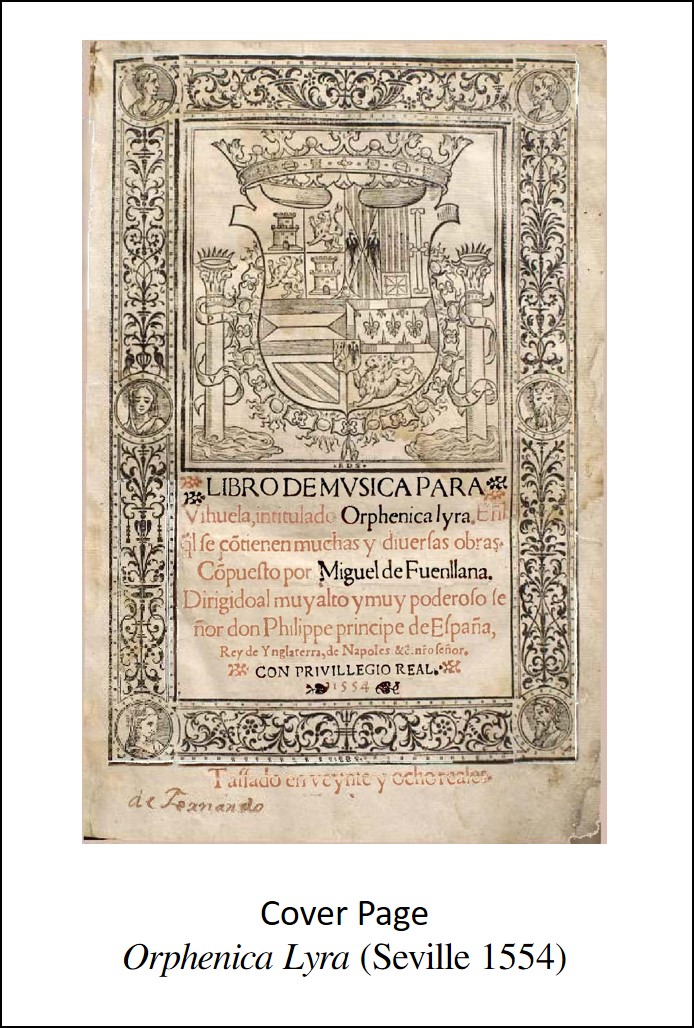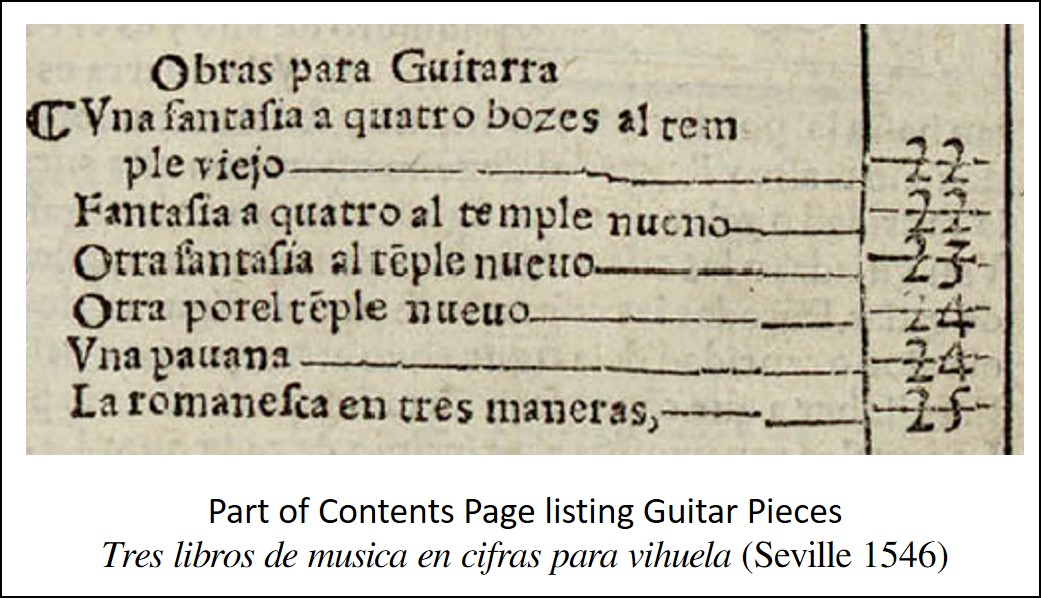The works of Luys de Narváez (flourished 1526-49) in Del Delphin are beautifully illustrated and presented (the computer screen photo below show a scan of the cover). Printed in 1538, it is actually a set of six books (hence the full title of Los seys libros del delphin) of polyphonic music for the vihuela. Although Narváez was Spanish, he adapted the contemporary Italian style of lute music. He was highly regarded during his lifetime, particularly for his vihuela playing and ability to improvise. With the exception of two motets, no other works of Narváez survives.
The challenge of reading this music today is twofold, the tuning of the vihuela which has a third string which is tuned a half tone lower than a ukulele or guitar, and the Italian tabulature which is “upside down” to our modern tabulature (i.e. the lower line on the printed page corresponds to the highest sounding string on the vihuela). Of course, the vihuela has 6 string courses so the bass notes on the lowest sounding strings need to be harmonically analyzed and rewritten/arranged to fit the 4-stringed ukulele. I would also arrange the music so that you do not have to re-tune the ukulele.
The works in Del Delphin include the first known variation sets. There are six diferencias, in the 4th to 6th volumes, most of them with 3 to 7 variations however one of the pieces has 22 variations.
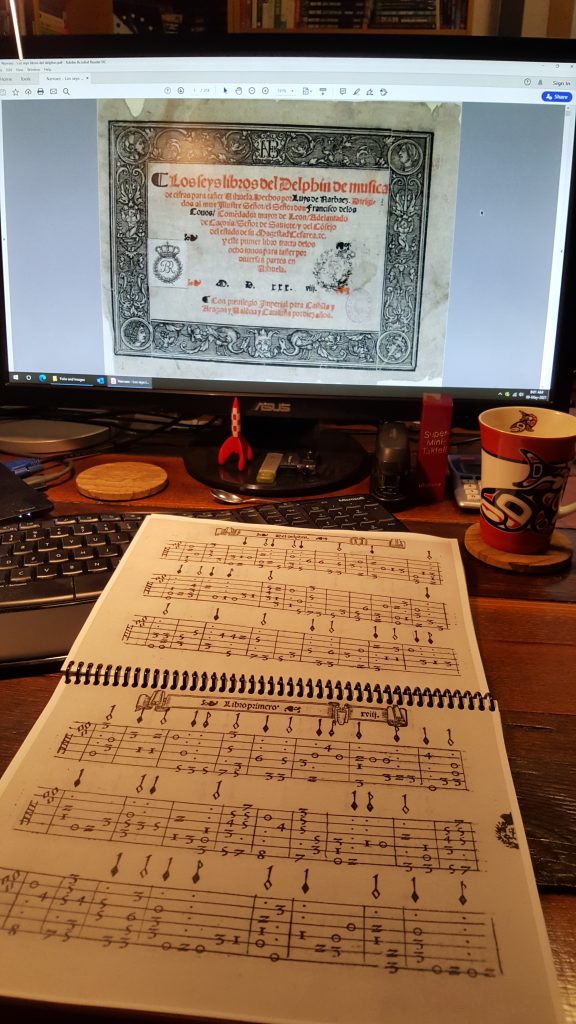
PS. The small rocket ship is a figurine based on the Tintin books “Destination Moon” and “Explorers on the Moon”. The silver coffee spoon is a Dutch tradition and this spoon was given to me when I was just one year old and is expected to last my lifetime. The Canadian art on the mug is a salmon by artist Jamie Sterritt. And yes, I still us a mechanical metronome from when I first started learning classical guitar.
Update as of June 4, 2021 — Two books of arrangements of Narváez’s music are now complete and available (click on an image below to see an expanded view).
Update as of June 16, 2021 — Third book of arrangements, with lyrics, of Narváez’s music is now complete and available (click on an image below to see an expanded view).

